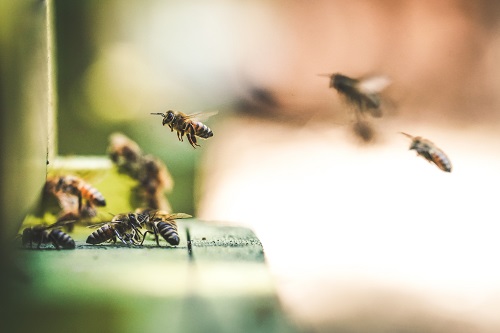How to Fertilize Your Grass to Make it Grow Faster?
A little hard work can go a long way! Yes, we agree that growing lush green grass in your garden can be quite an investment, both physical and financial. But then it will reward you for years to come in so many ways. A good garden is your refuge to a relaxing personal open space, it can bring up the value of your property and so much more.
From choosing the right seeds or sod to planting at the most suitable time, let the germination begin. Once your tiny saplings are out, it is time to water and fertilize your grass regularly. Fertilizers are nutrients that the greens need while growing up to suffix their needs to become healthy ones. Fertilizers are particularly important for the healthy growth of your grass. Watering every day and fertilizing after every 30 to 40 days is the key to having lush grass.
Unfortunately, most homeowners are not familiar with the use of fertilizers and find it complicated. This is the reason why they avoid using fertilizers, which is a justified act because the wrong use of fertilizers can harm your greens as much as it can burn them. Hiring landscapers don’t seem like a cheap option as well. You are left with no choice but to learn how to use fertilizers for the best results when it comes to growing grass.
Don’t fret as we are here to the rescue. This article contains every itty bitty detail of how to use fertilizers for your grass to make it grow faster.
Make a statement with this guide on different types of snake plants to grow in a home environment.
Determining Your Grass Type
It is very crucial to determine the type of grass that will be feasible to grow in the area (climatically) you live in. The soil, the temperatures, the moisture, every little detail helps grow the perfectly lush grass for your garden. So we basically categorize the grass as:
i. Warm-Season Grass
Warm-season grass is tropical in nature. It grows well in places where temperatures soar well above average. The soil is sandy, warm, and receives full sun. The growing season for these is in summers when the temperatures rise to 75-90 degrees Fahrenheit. Warm-season grass goes dormant in cooler temperatures. From fall to winters, these types of grasses start turning brown and return to their green color upon the revival of the spring.
Bahiagrass, Bermuda grass, St. Augustine grass, Zoysia grass, and Centipede grass are a few belonging to this category. Bahia and St. Augustine grasses are found in the Gulf States where the soil is sandy and the air salty. The temperature reaches well above the average here.
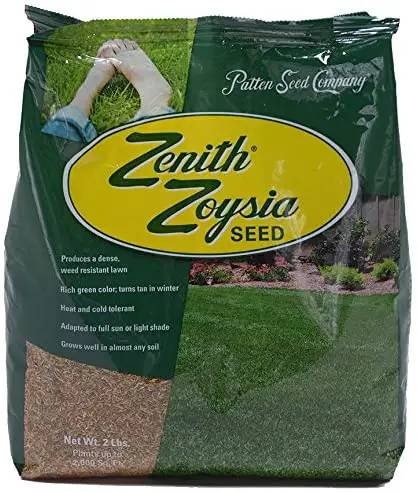
ii. Transition Zone Grass
Centipede is very well known to be a low-maintenance grass. Centipede, Bermuda, and Zoysia can be grown in transition zones that have hot, dry summers and moderately cool winters. These are drought tolerant and can withstand cold better than other warm-season grasses. A constant temperature below 60 degrees Fahrenheit can force them to go into dormancy and turn brown.
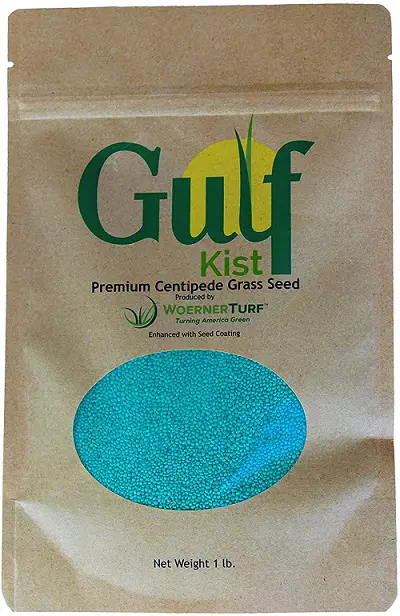
iii. Cool Season Grass
Kentucky bluegrass, annual ryegrass, bentgrass, perennial ryegrass, creeping fescue, fine fescue, and tall fescue are a few well-known cool-season types of grass. These types of grass grow best in winter hardy areas that take up cooler temperatures and dense shade. The perfect growth temperature slot for these grass range from 65 to 80 degrees Fahrenheit. Although they grow well in spring and late fall, just don’t plant them in spring. The best time is the start of fall because it gives the seed ample time to flourish before the summer heat. Watering them every day until the seeds start to germinate is the key to lush green cool-season grass. Some gardening experts recommend planting a mix of winter-hardy grass seeds. That will give you the best of both worlds.
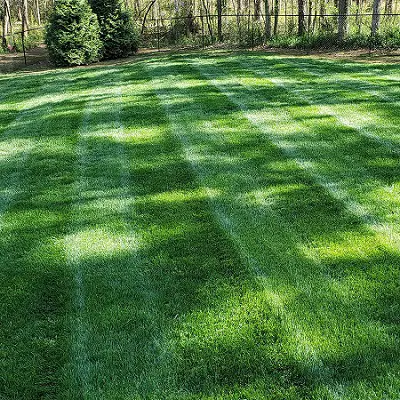
Types of Fertilizers
Do not undermine the importance of using fertilizers. A good gardener never does! Learn which fertilizers will have a positive impact on your grass and maximize its growth while fitting your requirements. Generally, there are two types of fertilizers.
- Organic: Organic fertilizers are made from natural matter like animal and plant compost, or manure. These fertilizers work slowly and for a longer period. The exact amount of nutrients present is hard to find in organic fertilizers.

- Inorganic: These types of fertilizers are artificially made from chemical components. They are for short-term and immediate use. And the nutrient count is exactly known in these fertilizers. You can get nitrogen, phosphorus, and potassium fertilizers or a mix of these three.

Now these fertilizers exist in three forms
- Granular Fertilizers exist in granules form. They can be spread by hand on topsoil and works by getting absorbed in the soil whenever you water it.
- Powder Fertilizers are also spread by hand and they need to be diluted in water for absorption in the ground and to be productive.
- Liquid Fertilizers are packed with nutrients and are often diluted with water. They are spread using a hose or water sprinklers and get absorbed quickly. But spreading it equally can be a little tricky.
These are further subdivided into the categories of slow-release and fast release according to the formulas used.
Read this complete guide on how to propagate succulents from leaves and cuttings if you want to expand your plant family.
1. Slow Release Liquid Fertilizers
The slow-release formula breaks down gradually over a period of time, saving you money, time, and efficiency. The slower it will break down, the longer it will last. Instead of fertilizing every four weeks, you can now do it after 6 to 8 weeks depending on your watering schedule.
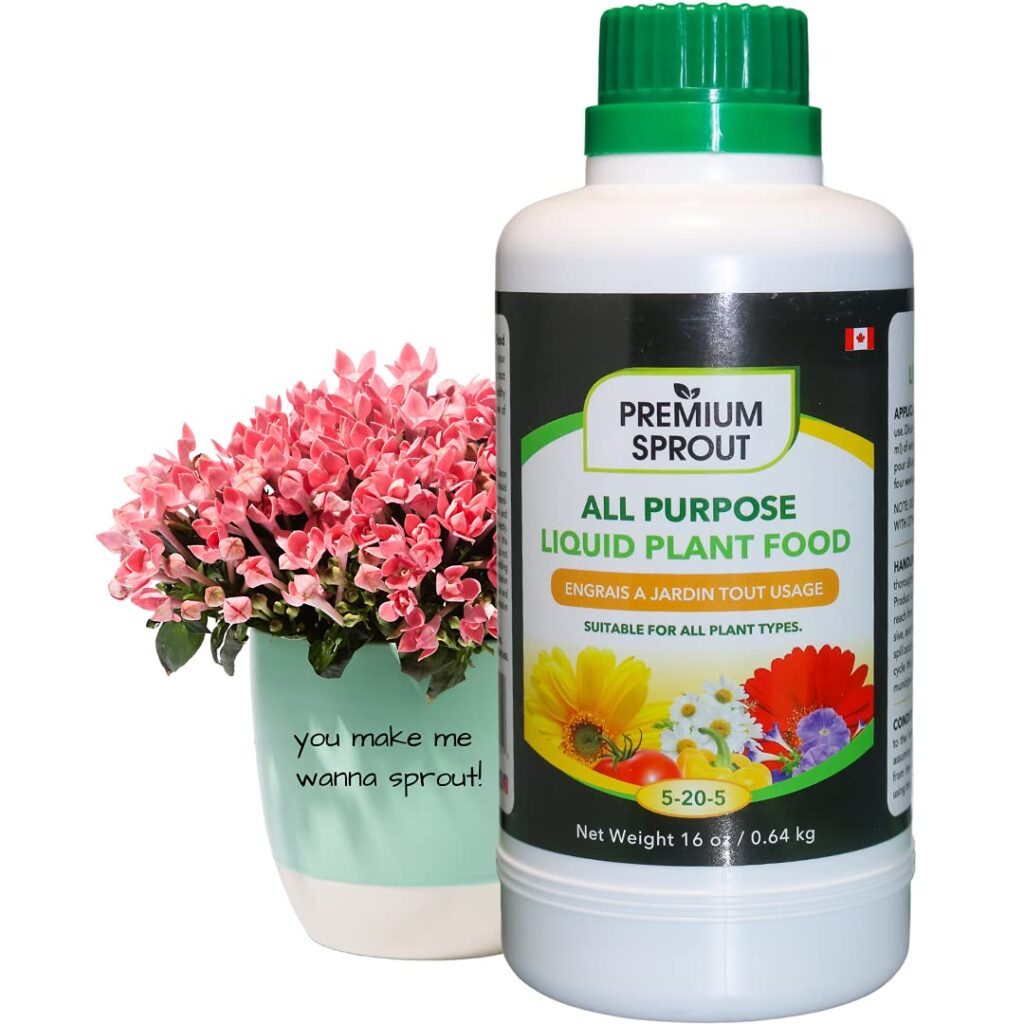
Liquid fertilizers can be easily applied by attaching a garden hose, though the setup can cost you more as compared to the granular fertilizer as that can be easily spread by hand. Liquid fertilizers have gained popularity over years now as they get absorbed in the soil easily as compared to the granular ones. The slow and steady results of the slow-release fertilizer mean less mowing of the lawn as well. Slow-release formulas are less likely to leach and hence considered environmentally friendly.
2. Fast Release Fertilizers
Fast release formulas break down immediately after they are spread. These are used when the lawn is in the immediate need to show results. Most landscaping companies prefer using fast-release formulas to make their customers happy with instant results. This rapid release of nitrogen makes the grass green and grows right away. But the result, as much as it makes you happy, is a short-lived one.
It requires more investment in the form of expenditure and time. This will work for approximately 2 to 4 weeks. And over application may result in burning of the leaves. The overuse of rapid-release fertilizer is not environmentally friendly as well. These fertilizers are good to use when you need your lawn to grow out of a lawn infection.
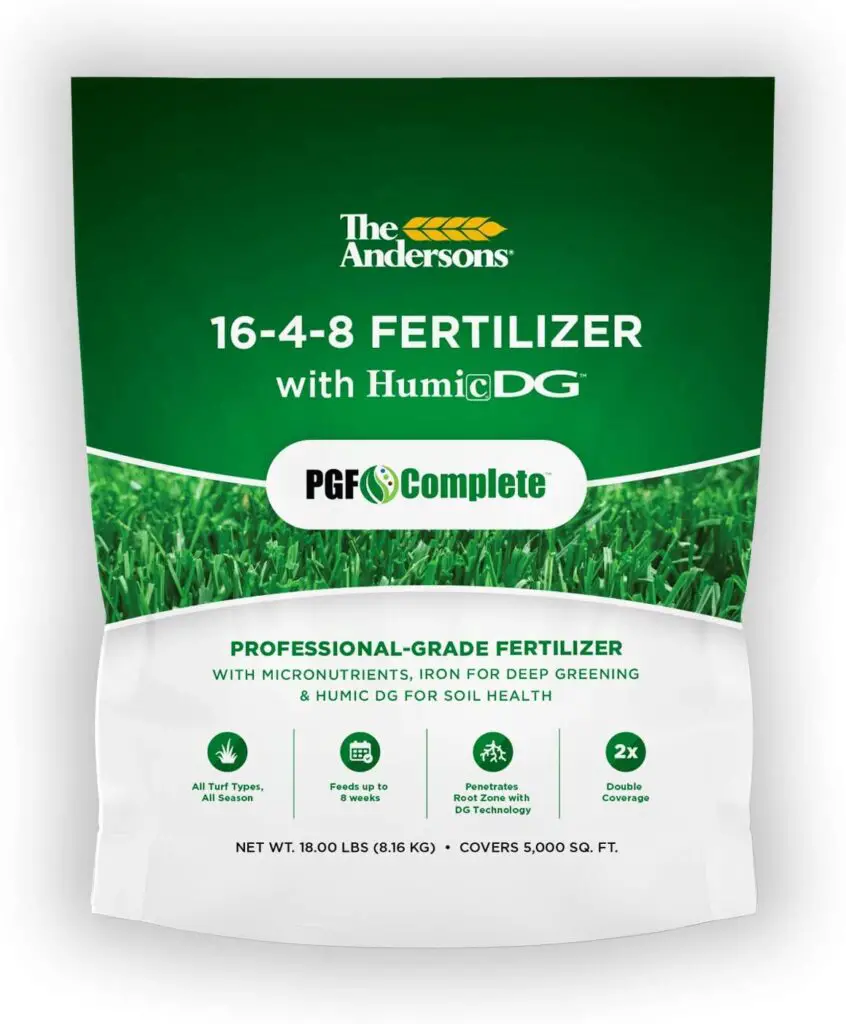
What Nutrients Will You Find in a Fertilizer and How to Check the Right one?
Usually, you will find fertilizers with a mix of three chemicals; nitrogen, phosphorus, and potassium. These are the primary nutrients to feed to your grass. When shopping for one, you will notice three numbers printed on the fertilizer bag or bottle. These numbers are the ratio in which these chemicals are present. This ratio is called NPK (nitrogen, phosphorus, and potassium). So a bag labeled 20-5-10 will have 20 percent nitrogen, 5 percent phosphorus, and 10 percent potassium. This is generally a good percentage ratio that is used for lawns in springtime. The bag is also filled with elements that guarantee a constant distribution.
a. Nitrogen
Nitrogen is one of the most important macronutrients for plant growth. The proteins present in the roots for plant growth are because of the amino acids found in nitrogen. This helps take up the water and sufficient nutrient to the whole plant. You want a beautiful green color for your grass, fertilize it with nitrogen. Nitrogen from the fertilizers is usually lost in the air as ammonia gas unless it is incorporated in the soil with water. So watering after fertilizing is of utmost importance unless you are using a liquid fertilizer. Usually, a nitrogen stabilizing product is used to protect the nitrogen from fading away in the air after fertilizing.
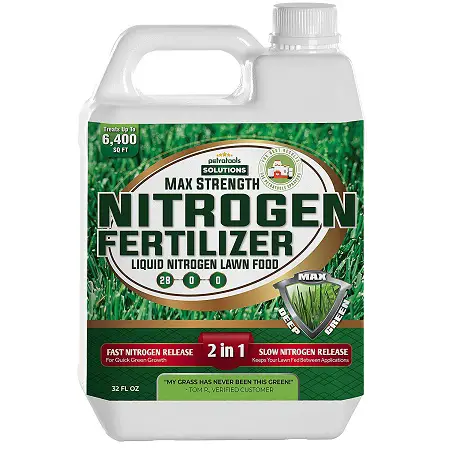
b. Potassium
If your grass blades are turning yellow or the turf has excessive weed or suffering from any kind of disease, then it’s your cue that your lawn is potassium deficient. Potassium strengthens the plant cell to the point where it can withstand any kind of stress like drought, cold winds, extreme sun, or any kind of infestation. Water immediately after fertilizing with potassium as that can reduce the chances of turf being over dried or being burnt. Use potassium sulfate as it doesn’t burn down the turf because of its low salt index. It can be used year-round but the best time to apply it is in fall as it replenishes the summer damages to the lawn.
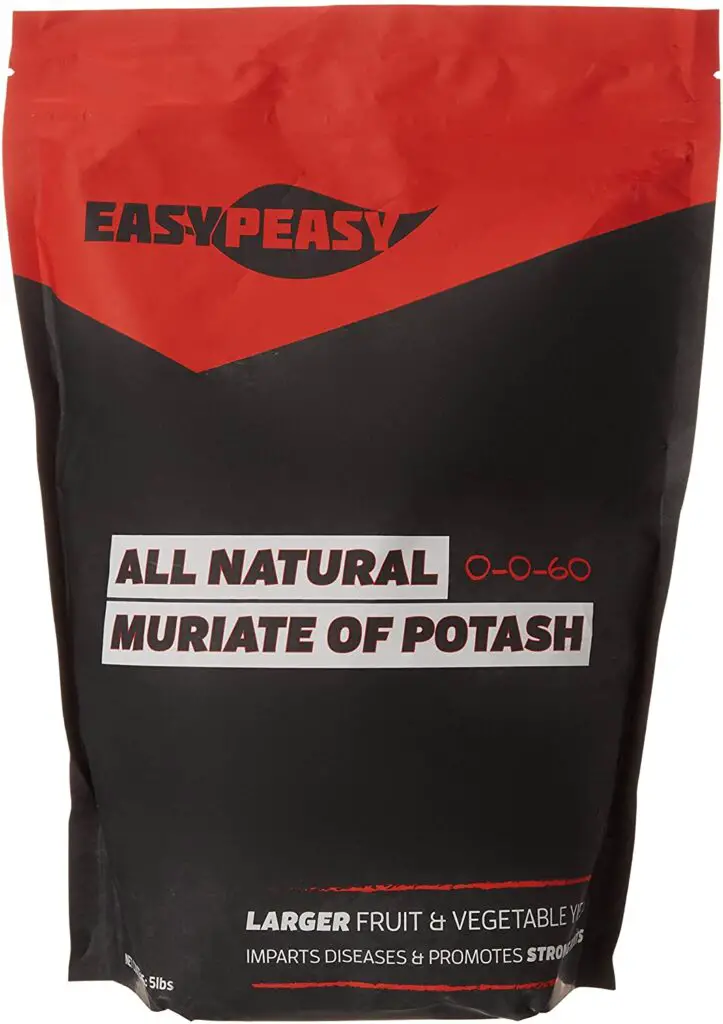
c. Phosphorus
Phosphorus strengthens the root and the stem system. It is a slow-acting nutrient but surely a long-lasting one. Fertilize the soil with phosphorus before planting the seeds as it enhances root growth. The existence of phosphorus keeps the grass lush and thick. Its absence can make the grass stunted particularly in the premature stages of growth. Just make sure that you don’t overdose the grass with phosphorus as it can burn the grass blades down. If your grass is phosphorus-deficient, look for signs like reduced vigor or very slow growth.

Other Factors to Consider
There are a few other factors to keep in consideration while using fertilizers for the fast growth of your grass. These factors may include:
i. Basic Watering Strategies
When professionals use fertilizers, they use big tankers to spray the fertilizers for even distribution. Since they are pros, they keep the factor of wind and many others calculated as well. And they do it while not consuming much time. Even if you are using granular fertilizer, watering your grass afterward is extremely important to make sure that the soil absorbs it and the chemicals are not lost in the air. Some formulas require watering as soon as possible (within 48 hours of application). Water deeply! Just keep in mind that the grassroots grow approximately three inches deep in the soil and water should reach them.
Invest in a water sprinkler for an even distribution of water. If your fertilizer mix contains a treatment for weeds and herbs then hold the watering till 48 hours. Overwatering can be a problem too. Too much watering can wash away the fertilizers to the storm ways into the rivers and canals causing water pollution.
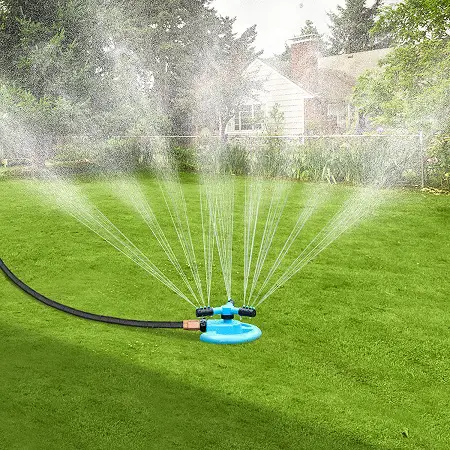
Tip: For even distribution when using liquid fertilizers, we suggest a hose-end applicator for a uniform distribution.
ii. Don’t Over Apply Fertilizers
Ever heard of fertilizer burn? Well, that happens when you tend to over-fertilize your grass. The overdose of nitrogen and salt from the fertilizer damages and sometimes even kills the grass. Over-fertilizing even slows the growth rate. So don’t be anxious. Be patient and give some time to see the results. The right amount of fertilizer will make your grass thicker, greener, and healthier although not overnight.
iii. Get a Soil Thermometer
Check your soil temperature checked before using any fertilizer. We are talking about the temperature inside the soil and not the air. The ideal temperature should be around 57 degrees Fahrenheit, sometime around spring. We highly recommend buying a thermometer for this purpose instead of guessing. Spring is the time of the year when the temperatures are perfectly moderate and most plants start multiplying and growing at this time. This is when they need the nutrient boosters the most.
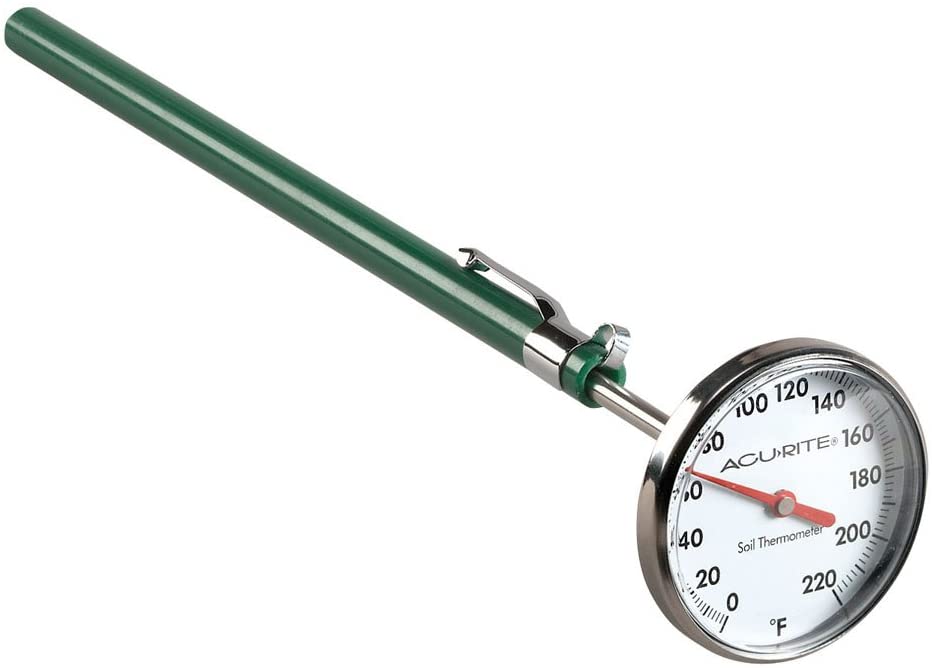
With the help of this article, learn how to paint indoor and outdoor metal furniture like a pro and give it a new look.
How to Apply Fertilizer to the Grass?
Prepping up your lawn at least two days before fertilizing is a must. A thorough watering session is required by your lawn and then let it dry. Do not fertilize a wet lawn. Check the weather forecast. If rain is expected, postpone fertilizing.
For the next step, select a spreader and fill it up with fertilizer directly from the bag. A few common home gardening spreaders include rotary, drop, and handheld. Rotary is good for a bigger sized yard and handheld is good for tiny yards.
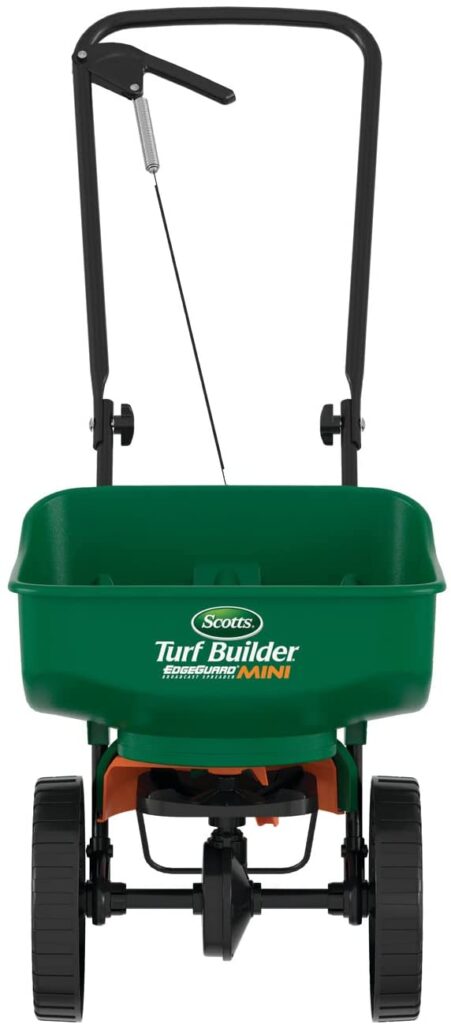
For spreading, an organized approach is the best. Start with the perimeter of your turf and move in orderly rows. When you are done, take a broom and spread the fertilizer evenly. Watering after fertilizing is a must as it washes off the fertilizer from the grass blades and lets it sink in the soil.
Tips:
- After you’ve fertilized your lawn for at least 24 hours or until it’s been absorbed into the soil, we strongly advise keeping it off-limits to youngsters and dogs.
- Don’t mow your lawn for two days. Give the fertilizer some time to settle down. Mowing your lawn will disrupt the even spread, resulting in moving the fertilizer before it sets in the soil.
- With warm-season grass growing in your yard, you can fertilize every 5 weeks in summers but for cool-season grasses, fertilizing twice a year is considered enough (once in spring and once in fall).
How Often Should I Fertilize the Grass?
Depending on the formula you are using, a quick-release fertilizer may ask for a top-up after every 3 to 4 weeks. However, you have to be careful not to burn your turf with over dosage. But if you plan on using a slow-release formula, it can last up to 6 to 8 weeks on average, giving you more time in between the feeding.
It is known that a full feeding of 5 to 6 times is required in a year to grow a thick and healthy lawn. If you are not feeding your grass enough, it will start showing signs of being malnourished and your lawn will have yellow and brittle grass. On the other hand, over-fertilizing will show burnt grass blades as a sign.
Just avoid fertilizing your lawn in extreme temperatures. Spring and fall seem like an ideal time to do so. Simply don’t be intimidated by the use of fertilizers. Just follow our guide from A-Z and you will be a pro in no time. Welcome to a thicker, softer, and greener lawn!

